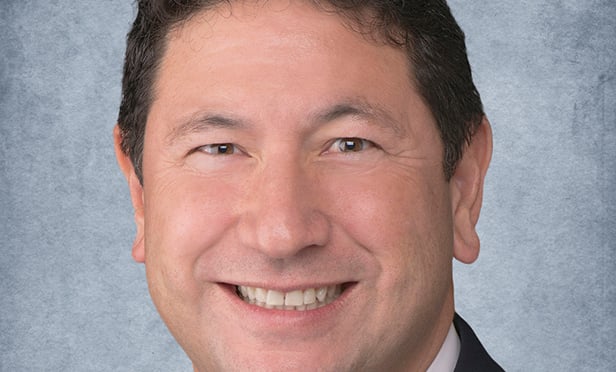 Sebree: “The maturing apartment investment climate has continued its migration from aggressive growth to a more stable but still positive trend,.”
Sebree: “The maturing apartment investment climate has continued its migration from aggressive growth to a more stable but still positive trend,.”
CALABASAS, CA—A new tax structure brings a variety of considerations to the multifamily investment market, while investors broaden their criteria to capitalize on positive apartment performance trends. In addition to these highlights, the new Marcus & Millichap 2018 North American Multifamily Investment Forecast offers a range of insights.
(For the full report, click here.)
The overall outlook for apartment investments remains positive, according to the report “gains continue to accrue despite rising construction levels, and though highly prized value-add opportunities may be difficult to find in many markets, they can offer impressive yields” says John S. Sebree, first VP and national director of the firm’s national multi-housing group.
“The maturing apartment investment climate has continued its migration from aggressive growth to a more stable but still positive trend,” he continues. “Though finding opportunities with significant upside potential has become somewhat more difficult for investors than three or four years ago, we continue to see impressive rent growth in a range of markets and in Class B and C properties. These assets often justify capital improvements and repositioning strategies. At the same time, apartment construction has finally brought macro-level housing supply and demand back toward equilibrium, restraining Class A upside potential in some markets with sizable deliveries.”
As a natural upshot of that, investors are casting a wider net with searches including “a variety of Class B and Class C assets, outer-ring suburban locations and properties in secondary or tertiary markets,” he says. “The yield premium offered by these types of assets has attracted an increasing volume of multifamily capital.”
 Chang: “Weighing the forecasts and incremental change over the next year, the Index is designed to show relative supply-and-demand conditions at the market level for the upcoming year.”
Chang: “Weighing the forecasts and incremental change over the next year, the Index is designed to show relative supply-and-demand conditions at the market level for the upcoming year.”
In fact, he continues, “In the last year, nearly half of the dollar volume invested in apartment properties valued at over $15 million went to secondary and tertiary markets, up from 38% of the capital in 2010.”
On the tax and legislative fronts, Sebree projects that the new tax law will bring additional clarity to the investment market, and there is an expected alleviation of “some of the uncertainty that held back activity over the past year.” A tighter monetary policy, including a rising interest rate climate, “could accelerate investor activity and a desire to secure interest rates at an attractive level.”
The report also unveils this year’s National Multifamily Index with a reversal of the top two slots. Seattle-Tacoma, Number Two last year, takes the pole position at the start of 2018, outperforming last year’s leader, Los Angeles, which slips back a notch. Rounding out the Top 10, in descending order, are: Minneapolis-St. Paul; San Diego; Portland, OR; Boston; New York City; Sacramento; Riverside-San Bernardino and Oakland, CA.
As John Chang, first VP of Research Services, explains: “Markets are ranked based on their cumulative weighted-average scores for various indicators, including projected job growth, household formation, vacancy, construction, housing affordability and rents. Weighing the forecasts and incremental change over the next year, the Index is designed to show relative supply-and-demand conditions at the market level for the upcoming year.”
(For the full, report, click here.)

















 Copyright © 2024 ALM Global, LLC. All Rights Reserved.
Copyright © 2024 ALM Global, LLC. All Rights Reserved.